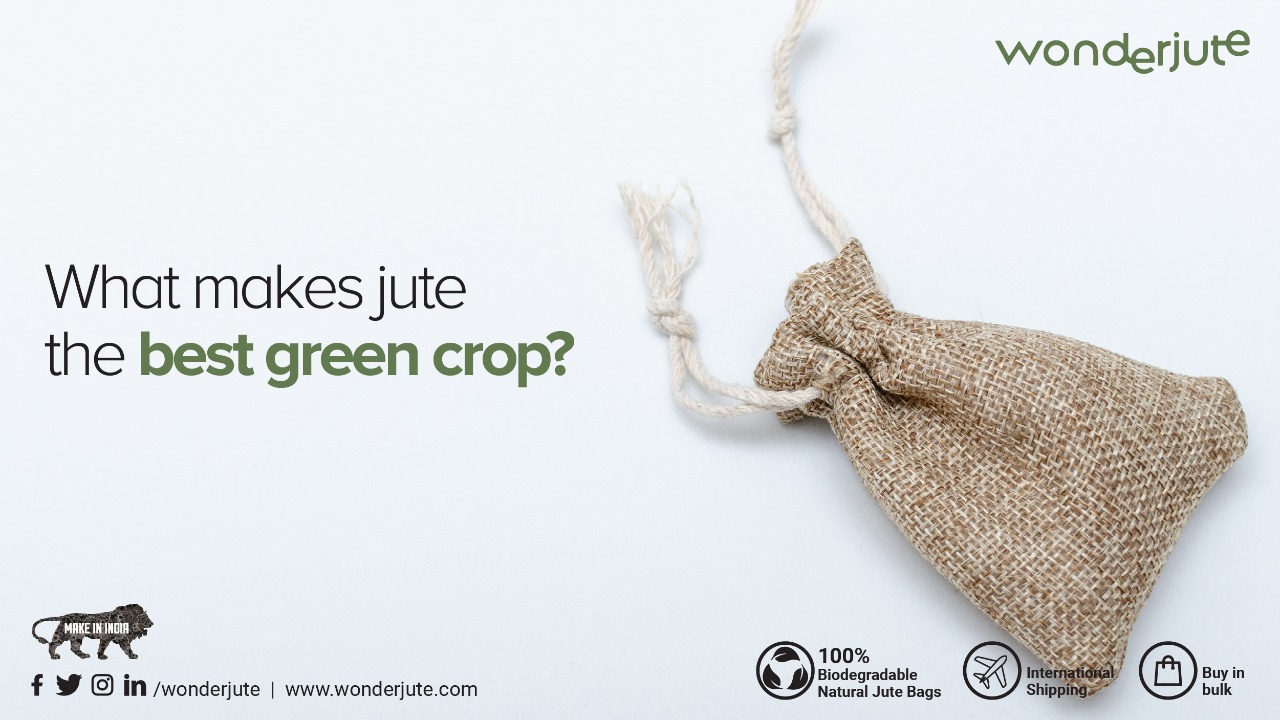
A crop native to Bangladesh and India, Jute is otherwise called ‘Golden fiber’ for its color and market value. The fibers are harvested from the skin and stem of the plant. Biodegradable, compostable, and recyclable jute, ticks all the right boxes when it comes to sustainability and the environment. If you are an environmentally conscious individual or you wish to run a business that is sustainable, including jute in packaging is the way to go.
Why is jute environmentally friendly?
- Fast maturation – The crop matures in just 4-6 months and offers huge yields in relatively small lands. From a land-use standpoint, jute production does not require huge acres of land. Further, growing jute increases the fertility of the soil and is beneficial for the crops that grow in future.
- Little need for irrigation – As a tropical crop, jute is well suited to hot and humid climates. It relies on natural rainfall and is not water intensive. With minimal irrigation requirements, growing jute is also energy efficient.
- Degrades in 1-2 years – Jute is biodegradable and compostable. Over a span of 2 years it can degrade naturally, thereby leaving a negligible carbon footprint.
- Strong and durable – The durability factor of jute is undeniable. The fibers are strong and resilient. They can be used multiple times and can be washed. They are sure to stand the test of time with minimal wear and tear.
- The strength of jute increases its carrying capacity. You will need only one jute bag in the place of many plastic bags.
- Breathable and resilient to weather conditions – This makes jute an excellent packaging material.
Lesser known facts about Jute
A lesser-known fact about jute is that the plant absorbs greater amounts of carbon dioxide and releases more oxygen compared to most plants. Growing jute is not just easy on the environment but also beneficial. Moreover, the wooden core of jute is a promising material. It can potentially provide for most of the world’s needs in terms of wood. This can save millions of trees and forest land globally. Raw green jute is an excellent raw material to make paper. While the fiber is called golden fiber, jute offers immense potential to be called a ‘Golden crop’ in the future.
What makes jute the best material for packaging?
Responsible packaging choices reduce the burden on natural resources. A single plastic bag can take over 500 years to degrade while potentially contaminating the environment and water. Jute has the lowest CO2 footprint and water footprint. Jute was in fact one of the traditional packaging materials used in the olden days. As a strong and breathable fabric, it ensures the integrity of the material that has been packaged with it. Being heat and UV resistant, jute can be used to pack a range of items. Besides, jute is lightweight and does not add too many extra kilos while shipping products.
Depending on the requirement, jute can be customized for packaging. For retail showrooms, one can provide impressive jute bags with a promotional logo. Jute does not lose its gloss easily and a customer is bound to use the bag multiple times. Jute bags are in vogue today and the design possibilities in jute are immense.
For other industries, that require transportation, shipping and protective packaging – jute of varying sizes and thicknesses can be customized. Jute ropes can be used to fasten products and help packages stay in place. With its fire-resistant properties, jute is also useful for long-distance transport and transporting flammable substances. As gunny bags, jute remains the best material to transport heavy materials. In every form, jute is undoubtedly the best packaging choice.
Jute is not just environmentally sustainable, it is economically sustainable too!
The common complaint of sustainability enthusiasts is that sustainable alternatives are more expensive. Jute proves this notion wrong. With jute, you can make high-quality, aesthetic-looking, and durable products at a much lower cost. Jute can be hip, trendy, and budget-friendly.
Jute fibers can be transformed into a whole range of products. Be it shopping bags, handbags, school bags, packaging material, etc., jute can be used. They can be dyed impressively to provide a range of options to customers. Undoubtedly jute is one of the most versatile fibers and there is tremendous scope for customization. Most importantly, jute requires little or no maintenance. Being sturdy and amenable to multiple uses, jute is considered the best return on investments both by individuals and businesses. Jute has shown the world, saving the environment can be pocket-friendly too.
Join the green side
It is hard to believe such a robust material can be produced with such little land, water, and pesticide requirements. The production process is sustainable over most crops while also releasing more oxygen. Jute bags outlast most packaging counterparts and are undoubtedly durable and recyclable. Despite our knowledge of the harm caused by single-use plastics, we continue to use them. When plastic is left in the environment, it not only takes a long time to degrade but also releases toxic substances. Jute on the other hand degrades faster with no toxic release. Jute reduces resource utilization and pollution thus enhancing the quality of our lives without our knowledge. As citizens and business owners, when our choices turn sustainable, the demand for sustainable products will increase further reducing the cost of these products. Responsible use today can save the world tomorrow. Remember, for every reusable jute bag or packaging option you choose, you are saving the world from a plastic bag that will linger for over 500 years. Jute is one of the easiest green choices we can make, contributing to improving the health and wellbeing of ourselves and the environment. The longer we fail to act, the greater are the repercussions. Jute is an alternative that helps us be a part of the solution and not the pollution!
